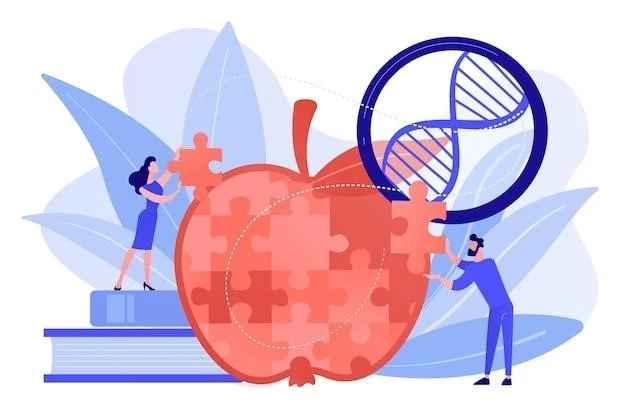Overview of CADASIL
Here is an overview of CADASIL, covering genetic causes, symptoms, diagnosis, treatment options, research, cognitive decline, and patient support.
Definition and Background
Cerebral Autosomal Dominant Arteriopathy with Subcortical Infarcts and Leukoencephalopathy (CADASIL) is a hereditary condition affecting the small blood vessels in the brain. It is caused by mutations in the Notch3 gene٫ leading to the accumulation of a protein called NOTCH3. This build-up results in blood vessel damage٫ reduced blood flow٫ and ultimately leads to stroke and vascular dementia. CADASIL typically presents in mid-adulthood and can have a significant impact on cognitive function and overall quality of life. Understanding the genetic basis of CADASIL is crucial for proper diagnosis٫ treatment٫ and management of this condition.
Prevalence and Inheritance
CADASIL is considered a rare condition, with prevalence varying across different populations. Inheritance of CADASIL follows an autosomal dominant pattern, meaning that a person only needs to inherit one copy of the mutated Notch3 gene from either parent to develop the condition. Individuals with a parent affected by CADASIL have a 50% chance of inheriting the gene mutation. Understanding the hereditary nature of CADASIL is crucial for genetic counseling, family planning, and early detection of the condition in at-risk individuals.
Genetic Causes of CADASIL
Learn about the Notch3 gene mutation responsible for CADASIL and how it affects blood vessel integrity and brain function.
Notch3 Gene Mutation
The Notch3 gene mutation plays a critical role in CADASIL, leading to the abnormal accumulation of NOTCH3 protein in the blood vessel walls. This accumulation causes damage to the small arteries in the brain, impairing blood flow and ultimately resulting in stroke and cognitive decline. Understanding the impact of the Notch3 gene mutation is essential for diagnosing and managing CADASIL effectively.
Transmission and Risk Factors
CADASIL is inherited in an autosomal dominant pattern, meaning a child of an affected parent has a 50% chance of inheriting the mutated gene. Risk factors for CADASIL include a family history of the condition. Genetic testing can help identify individuals at risk and enable proactive management strategies. Understanding the transmission and risk factors of CADASIL is crucial for early detection and intervention.
Symptoms of CADASIL
Discover the range of symptoms that CADASIL may present, including neurological issues and cognitive impairments.
Early Signs and Symptoms
Early signs of CADASIL may include recurrent migraine headaches, mood disturbances, cognitive changes, and transient ischemic attacks. Recognizing these symptoms early on can lead to prompt diagnosis and appropriate management to improve quality of life and prevent complications. If you or a loved one experience these early signs, seek medical evaluation for further assessment.
Lesser-Known Symptoms
In addition to more common symptoms, CADASIL may present with lesser-known manifestations such as vision problems, gait disturbances, and psychiatric symptoms. These less typical symptoms can also significantly impact individuals’ daily lives and should not be overlooked. Consult with healthcare professionals to address and manage any lesser-known symptoms associated with CADASIL effectively.

Diagnosis and Testing for CADASIL
Learn about the diagnostic tools used to identify CADASIL and the challenges involved in its accurate diagnosis.
Diagnostic Tools
Diagnostic tools for CADASIL include neurological exams, neuroimaging (MRI, CT scans), genetic testing to identify Notch3 gene mutations, and skin biopsy for NOTCH3 protein detection. These tests are essential for confirming a CADASIL diagnosis and guiding appropriate treatment and management strategies. Consult with healthcare providers experienced in CADASIL for accurate diagnosis and ongoing care.
Challenges in Diagnosis
Challenges in diagnosing CADASIL include its variable presentation, which can mimic other conditions, making it often misdiagnosed or overlooked. Additionally, access to genetic testing and specialized healthcare providers familiar with CADASIL may be limited. It is crucial to seek medical professionals with expertise in rare genetic disorders like CADASIL for accurate diagnosis and proper management.
Treatment Options for CADASIL
Explore the management strategies available to address symptoms and improve quality of life for individuals with CADASIL.
Management of Symptoms
The management of CADASIL symptoms often involves a multidisciplinary approach, including medications for symptom control (e.g., for migraines), lifestyle modifications (e.g., regular exercise, healthy diet), and cognitive rehabilitation strategies. It is essential for individuals with CADASIL to work closely with healthcare providers to tailor a comprehensive symptom management plan that addresses their specific needs and optimizes their quality of life.
Research Developments in CADASIL
Ongoing research in CADASIL aims to deepen our understanding of the condition, improve diagnostic methods, explore potential treatments, and investigate genetic and environmental factors that influence disease progression. Stay informed about the latest developments in CADASIL research to access cutting-edge information and potentially contribute to the advancement of knowledge in this field.
CADASIL and Cognitive Decline
Understand the impact of CADASIL on cognitive function and explore strategies to support cognitive health in individuals with the condition.
Impact on Cognitive Function
CADASIL can have a profound impact on cognitive function, leading to memory loss, executive dysfunction, and other cognitive impairments. It is essential for individuals with CADASIL, their families, and caregivers to be aware of these cognitive challenges and work closely with healthcare professionals to develop strategies to maintain cognitive abilities, enhance quality of life, and ensure appropriate support as the condition progresses.
Support and Resources for CADASIL Patients
Accessing support and resources is crucial for CADASIL patients and their families to navigate the challenges of the condition. Seek out support groups, counseling services, and disease-specific organizations to connect with others facing similar experiences. Additionally, stay informed about available resources, research updates, and educational materials to empower yourself in managing CADASIL effectively. Remember, you are not alone in this journey, and support is available to help you every step of the way.
